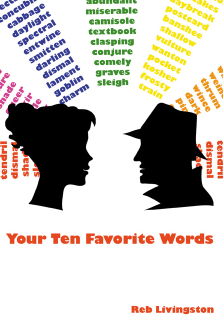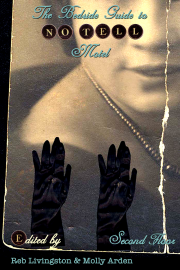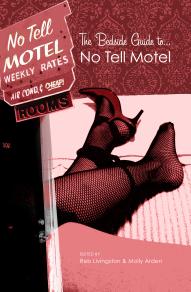Blake Butler Asks:
Can you really release a first book for $500?
If you do the layout and cover design yourself (or get someone to donate services) -- yes, absolutely.
I'm going to use the POD Lulu model because it's what I'm familiar with. Lulu is not the only POD publishers out there. I like Lulu a lot, but not everybody does. For instance, Didi Menendez was unhappy with Lulu and doesn't use them any longer.
Let's say you have an 80 page book with b&w page printing (the cover is color), 6x9, perfect bound (i.e. it has a spine)
Layout: You lay it out using a word processing program you already own. I use InDesign, which is expensive, but you could use MS Word or your favorite word processing program. As long as you're able to convert it to a PDF file, you're good. Layout is time consuming and there's a need to pay attention to detail, but it's not difficult. $0
Cover Design: Lulu has templates you can use. It's limiting, but if you're OK with plain, it'll work. Or you can design your own, or if you can't do that, find someone who can. No Tell Books relies on the kindness and inexpensive rates of several poet-designers who have sympathy for the cause. I pay them a small amount (I'll talk about that below), but maybe you have a friend who can help you in exchange for a favor, or just the kindness of his own heart. A good source for inexpensive, but quality cover design is from current or recent design grads. They're often looking to add work to their portfolios. That's how I landed the designer of The Bedside Guide to No Tell Motel -- Second Floor $0
ISBN Distribution: If you want to own the ISBN and have your press' name to appear as the publisher, it's $99. (This is what NTB does). If you don't care that it's listed as "Published by Lulu" instead of "Published by Insert Your Press' Name Here" it's now FREE (I just noticed this recently while ordering Rebecca Loudon's ISBN/distribution package, it used to cost money). Either way the distributor is Ingram. Or if you don't want an ISBN at all or for it to be available for order to retailers, that's also free. $100 or $0
Print Galley and Shipping: If you get it right the first time: $10
Short Run: Even if you go the POD route, you'll want some copies to send for review and to sell at readings. If you decided that it's important for your presses' name to appear as publisher and for you to own the ISBN, then you have a budget of $315. If you decide you don't care about that (you're satisfied that people can order it in a bookstore or an online retailer), then you have a budget of $415. If your book is 80 pages, you can do a short run of 65 books for $315 (that's $4.91 per book). With a budget of $415 you can do a short run of 90 books (that's $4.58 per book).
Now when I say "short run" I don't mean that's all the books out there. The short run is for you to use for review copies and have copies to sell at readings, trade, etc. Purchases made online (via Lulu, Amazon, B&N, Powell's, etc.) or ordered from bookstores are printed on demand. So if it ends up 2000 people buy your book, 2000 copies are printed (at no cost to you -- you get a royalty, which you decide beforehand by pricing the book). If NOBODY orders your book, you're not stuck with 2000 copies molding in your basement or collecting dust in a warehouse (charging you $$). If nobody orders your book, no more copies are printed. $315 or $415
Postage and shipping: People forget about this. You'll need to pay for getting the books shipped to you and sending out review copies either Book rate or First Class postage. This could be a little more if you send out a lot of review copies, postage has really gone up recently. Estimate: $75
So there, that's how you publish a book, have it listed at online retailers, available to order in bookstores and have copies on hand to promote. For $500.
Does No Tell Books only spend $500 per full-length collection? No, I spend double that. That's because I send out over 50 review copies per title and everyone who does work on the book gets paid. They don't get paid much, but they get paid. It's important to me that everyone gets paid something.
This is my general budget for a "full-length" poetry collection:
$150 -- payment to author (they get royalties too -- but that's not upfront, that's based on sales) -- in most cases the authors ask for that payment to go towards additional author copies
$150 -- cover design
$50 -- proofreader
$100 -- ISBN, global distribution
$20-50 -- Print galleys for both me and the author. When we have to do a few rounds of galleys, this cost goes up.
$450 -- initial short print run -- 100 copies (author copies, review copies, books to sell at conferences & readings, etc.) Often the short run is a little larger because authors buy additional copies (sold at an author rate) -- this is not a cost for the press
$100 - postage
Total: $1050
Anthologies are more because there's more pages (individual book cost is higher), the print run is bigger and there's a crap-ton of postage involved with contributor copies.
That's how I do it, but as you can see there's wiggle room to save money, especially if you aren't paying for services or do a smaller short run.
Labels: publishing






12 Comments:
So for a grand I can get you to write a book, put my name on it as "with Phatback" and be in the publishing biz? I know what I'm asking for fer Christmas!
I didn't read the whole post -- just got the part that mentioned my name. Anyway, I don't use Booksurge.
Thank you,
Didi Menendez
this is great reb. hopefully people will take this to the bank
it would be interesting also to see a cost sheet for short run, non POD publishers, just for comparison's sake
thank you for writing this, i will put in requests more often! ;)
Sorry about that Didi, I removed the inaccurate reference. If you don't mind my asking, why do you use these days?
Only tangentially related to this post: if you're ever in the market for a new proofreader, I would happily do it. My editorial job involves no hands-on editing work, and I miss it.
- Fritz's Rox
Reb, as usual, you rock. I've never seen the Lulu experience broken down quite this way before. Thanks for writing it up.
Blake, the biggest difference in cost for a short run between POD and a traditional printer is likely going to be the DISTRIBUTION. If you did a short run of 100 copies, maybe you'd save a little per book (or maybe not, prices go down depending on how many copies you print at once) -- but if you print 100 copies via traditional means -- you just have 100 copies. There's no distribution included in that.
Now, if what you're interested in doing is creating a limited edition book and handling the distribution/sales yourself -- traditional printing might be the better way to go -- you'll have more options -- for instance, I don't know of any POD printers that offer matte covers.
But a POD book is the same as a standard traditionally printed book. Same printing technology, same paper weight, etc. Those books are all printed the same way these days.
I appreciate the primer. Really.
this was a very informative and interesting read. Even artists who are not poets or who are looking to make things not as heavy-weighted as **my first book!** (rainbows and butterflies and candycanes) could use this as a guide for mapping out their project - and hey! maybe even include the budget in a grant proposal.
Reb,
What precisely did you do then regarding spine problems or general problems, do you have a direct contact? and if so, how? i am so nearly dropping out of the lulu thing, it is so frustrating!
I haven't done a book since last year (although Rebecca Loudon's is very close to being ready) -- but I have had spine problems in the past. I no longer have any firm contacts in Lulu -- but do know that with my book that Coconut did, there was some spine issues and Bruce and Meghan (the designer) eventually had to speak directly to their head designer to get it right.
The problem with thinner books is that if the spine is just a wee bit off, it's pretty noticeable. For instance you can have it perfect, but the glue varies from book to book and on thin books that can make a different.
No Tell Books no longer does contrasting colored spines on books less than 100 pages because I don't want to have to deal with the hassle of 3 or 4 galleys to get it perfect. I also tell the designers ahead of time to leave room above and below the spine text to allow for the variation in printing.
interesting, who designs the covers or does it vary? I do the dusie ones and it seems that it is sometimes hit or miss regarding the whole print and spine, etc and it is taking longer and longer to resolve problems, i love the idea behind pod, but the stress of copies not being guaranteed, well I hate that risk. I take all of the precautions, but my end up doing an automated spine and upload front and back covers to alleviate that problem...well, not sure if that will actually solve it and I really like doing the full-on layout. my book went thru bookmobile, and I really love how well it came out...now if only i had a few grand for book ventures each year!
Post a Comment
<< Home